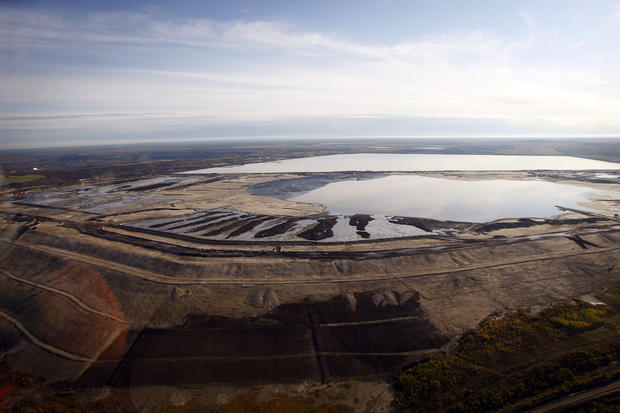Texas landowner plans to fight new TransCanada pipeline
Construction of the controversial Keystone XL pipeline, initially rejected in January by President Barack Obama on the grounds that more environmental review was needed, will now move forward. At least, in part.
On Monday, TransCanada Corp announced plans to begin building a portion of the contentious pipeline from the oil storage hub of Cushing, Oklahoma, to refineries on Texas' Gulf Coast. The Canadian pipeline company says it hopes to launch construction on the $2.3 billion southern leg by the beginning of the 2nd quarter and anticipates completion by mid-to-late 2013.
It was an announcement Julia Trigg Crawford has been dreading for months.
"Today is not a good day," Crawford told CBS News over the phone Monday afternoon.
Crawford's 600-acre farm near the Texas-Oklahoma border has been in her family since 1948, but with Monday's announcement some of that land may soon become the property of TransCanada. That's because her farm lies directly in the path of the pipeline. And the Canadian company wants it. Badly.
TransCanada initially tried to pay Crawford for an easement on the land, but she had concerns about potential pollution to a local aquifer that irrigates her soybean, corn and wheat fields. She also worried trenching would destroy archeological artifacts from the Caddo Indian tribe that litter her land. She turned down the offer.
Unfazed, TransCanada condemned 30-acres of meadowland on Crawford's property and seized it under eminent domain. Crawford decided to sue TransCanada, drawing support from a 2011 Texas Supreme Court decision that brought into doubt the constitutionality of a private company using eminent domain proceedings against a landowner. Crawford won a temporary restraining order from a Paris, Texas, judge who ordered the company not to touch her land. But that restraining order expired on Friday and will not be extended.
With the restraining order out of the way, all the company needed to build on Crawford's land was a route that didn't cross international borders. They got it by chopping up the pipeline project.
The original Keystone XL plan submitted to the State Department carried the pipeline more than 1,600 miles from the oil sands of Alberta, Canada, all the way down to Texas refineries. But since the pipeline would cross the Canadian border, a Presidential Permit for the project was needed to move forward. After assessing an environmental impact review that took TransCanada three years to put together, President Obama rejected the proposal based on one aspect of the proposed route - environmental issues related to the Ogallala aquifer in the Sand Hills region of Nebraska.
Forced to find another route through Nebraska and once again seek State Department approval, TransCanada would have had to wait until the beginning of 2013 to begin construction on Keystone XL. The company decided instead to start building a portion of the pipeline that didn't need presidential permission -- through the southern states.
The White House supported the move Monday, saying in a statement, "The President welcomes today's news that TransCanada plans to build a pipeline to bring crude oil from Cushing, Oklahoma, to the Gulf of Mexico. As the President made clear in January, we support the company's interest in proceeding with this project, which will help address the bottleneck of oil in Cushing that has resulted in large part from increased domestic oil production, currently at an eight year high."
TransCanada CEO Russ Girling also touted the benefits of the project in a press release: "The Gulf Coast Project will transport growing supplies of U.S. crude oil to meet refinery demand in Texas. Gulf Coast refineries can then access lower cost domestic production and avoid paying a premium to foreign oil producers. This would reduce the United States' dependence on foreign crude and allow Americans to use more of the crude oil produced in their own country."
While many are pleased at the prospect of U.S. job creation and less dependence on foreign oil, others, like Crawford, plan to fight back.
Crawford's plight has become a cause célèbre for other landowners, property rights advocates and environmentalists all along the 376 mile stretch of East Texas needed to build the pipeline. They accuse TransCanada of using bullying tactics to seize land for use on a pipeline that could threaten water supplies in drought stricken Texas. Crawford appreciates the support, but would like to see a legal ruling in her favor.
To stop TransCanada from building on her land, Crawford will have her day in court. But that day won't come until the end of April. TransCanada plans to begin construction by the end of March. Which means by the time the court could rule against TransCanada, the pipeline could already be running through Crawford's backyard.
